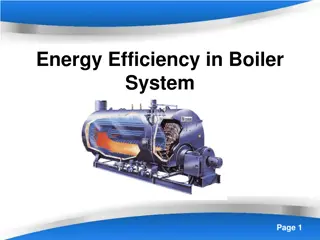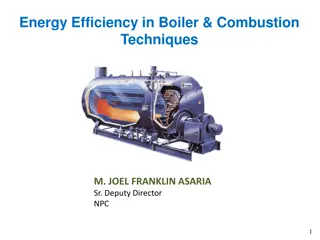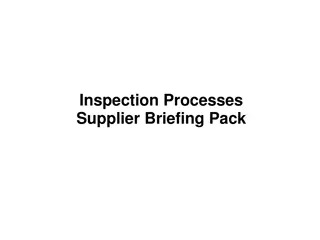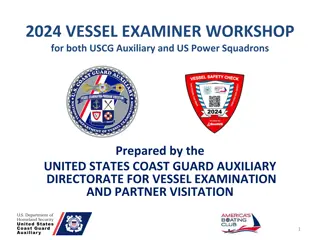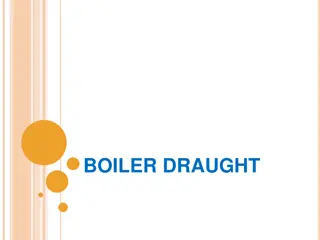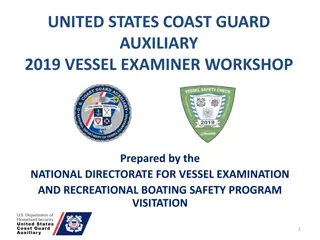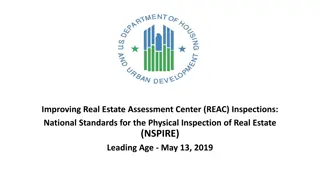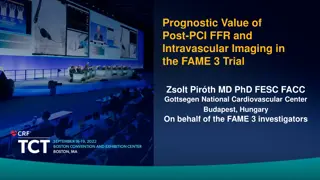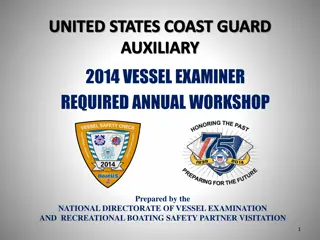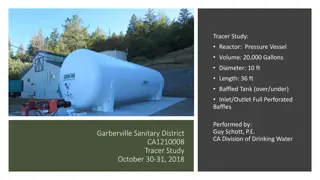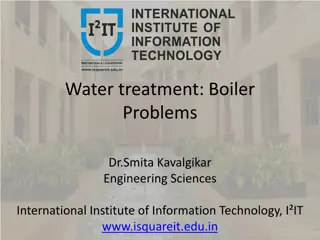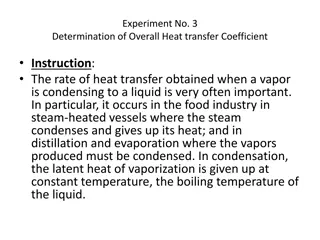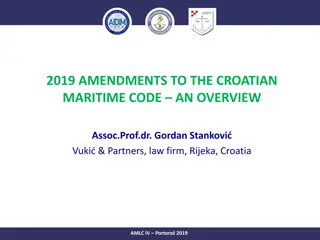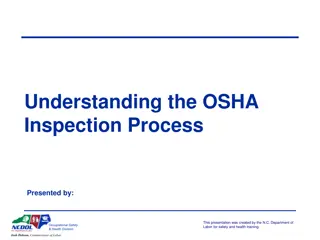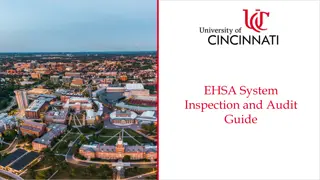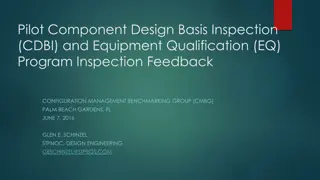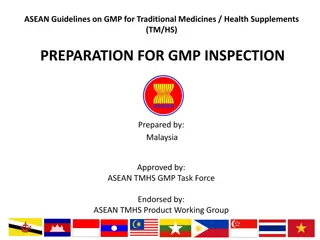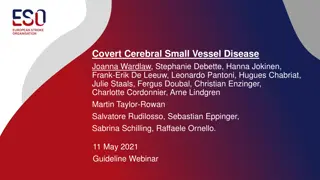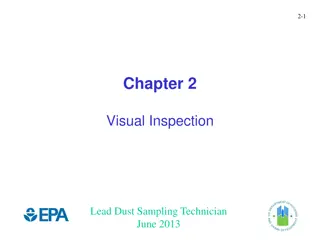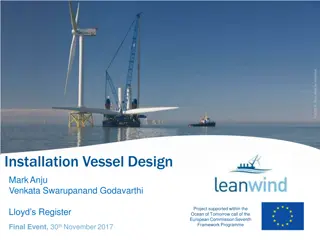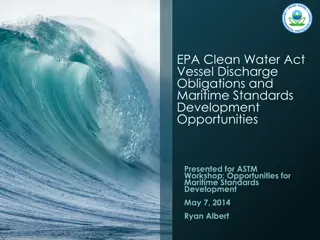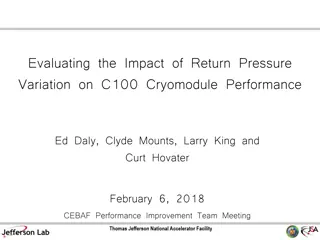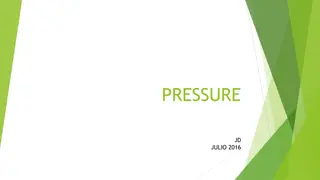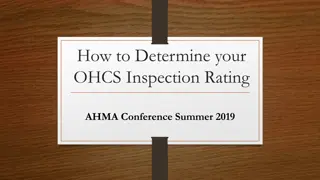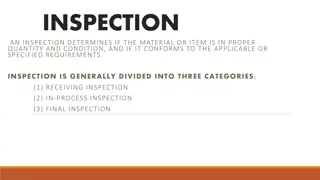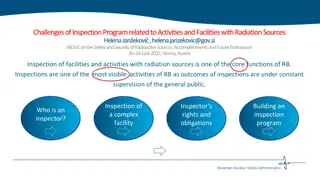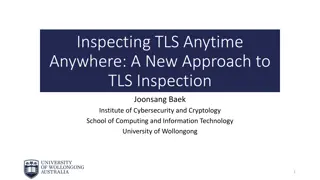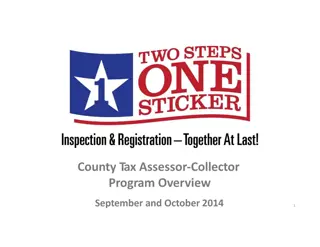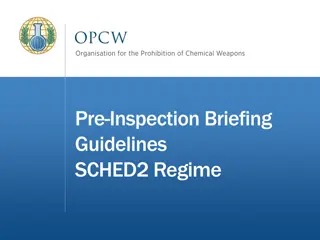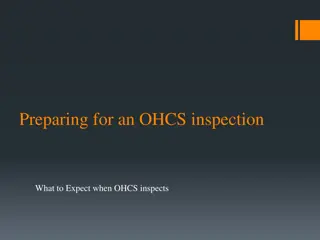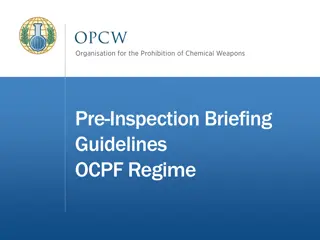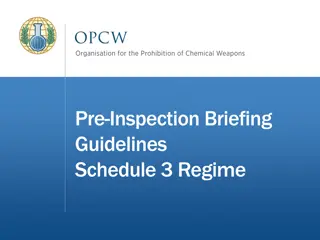Understanding Visual Inspection in ASME Boiler and Pressure Vessel Code
Visual Inspection is a key method in evaluating surface conditions of components. This article covers the types of examinations, importance of visual examination, surface/volumetric examinations, key terminology, and the difference between specification and procedure.
Download Presentation

Please find below an Image/Link to download the presentation.
The content on the website is provided AS IS for your information and personal use only. It may not be sold, licensed, or shared on other websites without obtaining consent from the author. Download presentation by click this link. If you encounter any issues during the download, it is possible that the publisher has removed the file from their server.
E N D
Presentation Transcript
Visual Inspection Types of Examinations Per Section XI of the ASME Boiler and Pressure Vessel Code (Rules for In-service Inspection of Nuclear Power Plant Components), there are three types of examinations used during an in-service inspection: Visual Surface Volumetric
Visual Inspection Visual Examination Definition: A nondestructive examination method used to evaluate an item by observation. Used to determine the surface condition of an article, alignment of mating surfaces, compliance with physical requirements (dimensions, settings), etc. Usually the first method employed for locating suspected defects Also the oldest and most commonly used NDT method
Visual Inspection Why Visual Examination? Can be used to inspect for surface-breaking discontinuities: Cracks Holes Corrosion Does not require special equipment other than good eyesight (optical and mechanical aids optional to improve inspection quality) Low cost
Visual Inspection Surface/Volumetric Examinations Surface examinations indicate the presence of discontinuities on the surface of an article Typical inspection methods: liquid penetrant, magnetic particle, eddy current Volumetric examinations indicate the presence of discontinuities throughout the volume of the article May be conducted from either the inside or outside of the component Typical inspection methods: radiography, ultrasonic testing, eddy current (for thin tubing or plates)
Visual Inspection Some Key Terminology Specification Procedure Standard Regulation Code
Visual Inspection Specification vs. Procedure Specification: An explicit set of requirements to be satisfied by a material, product, or service. If a material, product or service fails to meet one or more of the applicable specifications, it may be referred to as being out of specification (OOS) Procedure: Standardized and documented process for performing an experiment or conducting an evaluation.
Visual Inspection Standard Two Definitions 1) Artifact that serves as a basis for comparison; a reference against which other things can be evaluated or calibrated. 2) A set of technical definitions and guidelines that function as instructions for designers, manufacturers, operators, or users of equipment.
Visual Inspection Regulation Vs. Code Regulation: A principle, rule, or law designed to control or govern behavior. Code: 1) A systematic collection of regulations and rules of procedure or conduct. 2) A standard that has been adopted by one or more governmental bodies and is enforceable by law, or when it has been incorporated into a business contract. - Example: ASME Boiler & Pressure Vessel Code
Visual Inspection More Common Terminology Discontinuity an interruption in the normal physical structure of an article (ex. cracks, seams, porosity) Defect a discontinuity that interferes with the usefulness of the article All defects are discontinuities, but not all discontinuities are defects!!
Visual Inspection More Terminology Relevant Condition a condition that requires supplemental examination, corrective measure, or analytical evaluation Evaluation the process of determining the significance of examination results through the comparison of those results with applicable acceptance criteria to determine whether an article is acceptable, salvageable (can be repaired), or rejectable Is a small imperfection acceptable?
Visual Inspection VT-1, VT-2, VT-3 VT-1: Exams conducted to detect discontinuities on the surface of components ( specific exam ) VT-2: Exams conducted to detect evidence of leakage from pressure retaining components (tanks, pipes, etc.) VT-3: Exams conducted to determine the general mechanical and structural condition of components and their supports ( general exam ) Verification of clearances and settings Inspection for loose or missing parts
Visual Inspection Inspection Requirements Usually requires a written procedure that outlines the following: Type of exam to be performed (VT-1 or VT-3) Illumination requirements (ex. 50 foot-candles) 1 foot candle is equal to the amount of light given off by a standard candle at a distance of 1 foot Surface preparation requirements Acceptance criteria Inspection interval (how often inspection must occur) Required test documentation
Visual Inspection Direct vs. Remote Direct visual exams usually occur within 24 of the surface to be examined may use mirrors or magnifying lenses Remote visual exams performed in areas that are inaccessible for direct examination (inside of pipes and tanks or in hazardous or radioactive areas)
Visual Inspection Optical Aids Used when direct visual examination is not possible Microscopes Borescopes Fiberscopes Video Cameras
Visual Inspection Mechanical Aids Micrometers Calipers Depth gauges Thread pitch gauges Feeler gauges Weld gauges
Visual Inspection Certification Requirements Per ASNT Recommended Practice No. SNT-TC-1A, 2011 edition: High School Graduate or Equivalent (hrs) Two Years of Engineering or Technical School (hrs) Experience Level (hours) Certification Level I 8 4 70 II 16 8 140 Totals: 24 12 210 Level I Trainee Level II More experienced Level III Highest certification
Visual Inspection Certification Requirements, Continued Must also pass annual eye exams for: 1) Near vision acuity (sharpness of vision) Jaeger chart 2) Far vision acuity Snellen chart 3) Color vision Ishihara
Visual Inspection Jaeger chart Near vision acuity is addressed in NDT certification standards and one of the most common means to measure near vision acuity for NDT personnel in the U.S. is to have them read text from a standardized reading card called the Jaeger chart.
Visual Inspection Snellen chart The so-called Snellen chart is an eye chart that is used to measure visual acuity, or how well somebody sees. The Snellen chart is the most prevalent eye chart
Visual Inspection Ishihara test The Ishihara test is a color perception test for red-green color deficiencies. The test consists of a number of colored plates, called Ishihara plates, each of which contains a circle of dots appearing randomized in color and size. Within the pattern are dots which form a number or shape clearly visible to those with normal color vision, and invisible, or difficult to see, to those with a red-green color vision defect, or the other way around.


